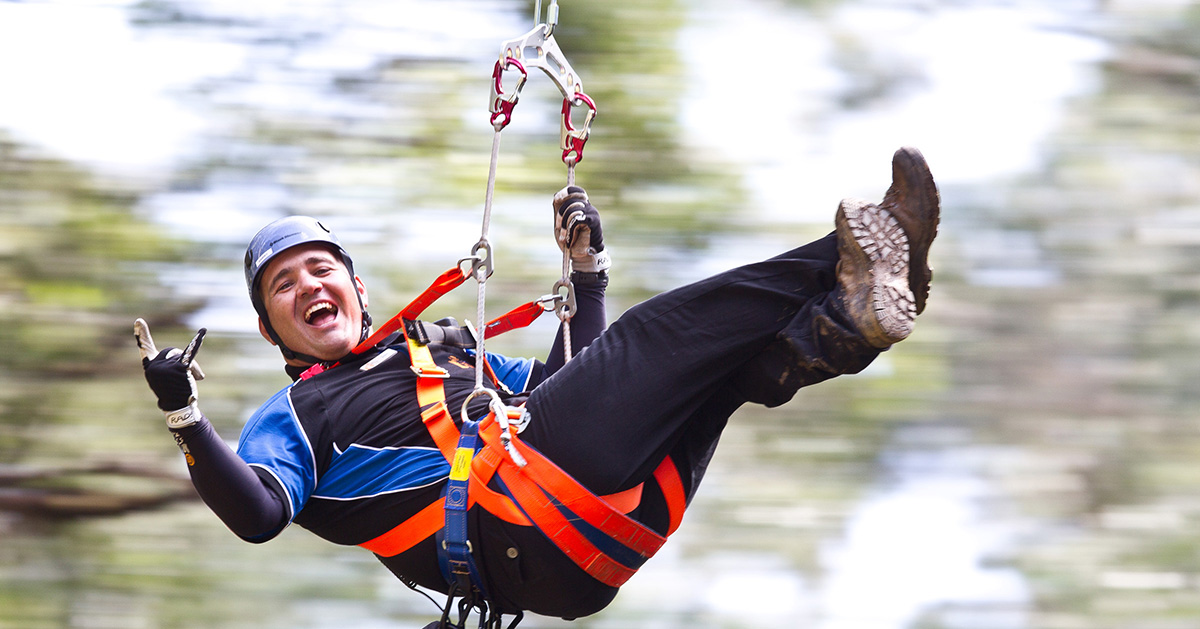
Are you trying to find a new business venture? Think about launching a zip line company! People of all ages can take part in this interesting and engaging endeavor, and it has the potential to make a sizable profit. If done right, zip lines can be a profitable method to give your customers a fun and exciting experience. Zip lines are a fantastic way to experience the outdoors while getting your heart racing. There are a few things to take into account when starting a zip line business. We’ll go over the fundamentals of launching a zip line business in this blog post.
Zip lines are a fantastic way to experience the outdoors while getting your heart racing. There are a few things to take into account when starting a zip line business. We’ll go over the fundamentals of setting up a zip line company in this blog article, from picking a location to obtaining insurance. Most people envision typical businesses like restaurants, shops, or services when they consider opening their own company. There are other more enterprises that can succeed, though. Did you know how to launch a zip line business, for instance? If done right, zip lines can be a profitable method to give your customers a fun and exciting experience. We will go over the fundamentals of launching a zip-line business in this blog post. We’ll talk about issues like picking a site, advertising your company, and navigating regulations. Tourists and locals alike are finding ziplines to be a popular attraction.
Are you trying to find a new business venture? Think about launching a zip line company! People of all ages can take part in this interesting and engaging endeavor, and it has the potential to make a sizable profit. Take these easy steps to get started. You must first choose an appropriate area for your zip line course. The ideal location will have lots of open space and trees that can act as riding obstacles. The climate must also be taken into account; a zip line course in the tropics will differ greatly from one in the mountains. Start developing your route after selecting a site. The various sections, including takeoffs and landings, must be mapped out.
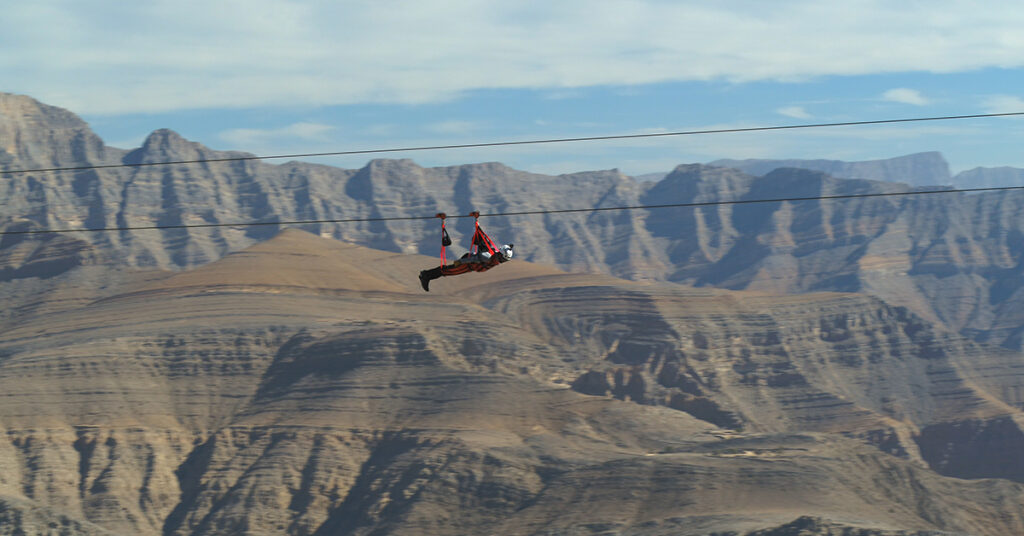
Design Guide for Zip Lines
Although many people consider zip lines to be enjoyable recreational activities, they may also be an effective tool for businesses. A well-planned zip line may make it simple for employees to move between buildings or campuses, and it can even be utilized to convey products. Use this article to discover the fundamentals of zip line design if you’re considering constructing one in your place of business. You can learn more about picking the ideal location, creating the course, and taking safety into account. You may design a zip line that is enjoyable and secure for your staff and guests by using the advice in this article.
There are a few considerations you should make if you’re considering about incorporating a zip line into your company. We’ll go over the fundamentals of zip line design in this article to help you make a ride that is secure and enjoyable for your visitors. reading more When developing a backyard attraction, zipline design is crucial. Although they are thrilling and a terrific form of exercise, improper installation or defective equipment can cause significant injuries. Fortunately, your zip line will be secure for everyone who rides it if you prepare in advance and use the right tools and methods. We’ll show you how to set up your own zip line safely with just a few basic tools in this guide.
Design calculations for zip lines
Consider zip-lining if you’re seeking for an exhilarating outdoor pastime. All ages of adventurers will enjoy this heart-pounding journey. Whether you’re a novice or an experienced zip liner, it’s crucial to have a fun and safe experience. You must comprehend the fundamentals of zip line design calculations in order to accomplish it. A zip line, also known as an aerial runway, is a type of cable-hung transportation that consists of an overhead wire and a platform that is mounted on a moving trolley. Riders move from the platform to the other end of the line using gravity. Although thrill-seekers choose this kind of transportation, it can also be employed for more utilitarian tasks like moving cargo between locations. In this article, we’ll go through some of the crucial design calculations that must be made while organizing a zip line.
People frequently approach us for advice on how to construct zip lines. A zipline is essentially a cable stretched across two sites. You will frequently see a homeowner installing a pulley and two wires between trees. These zip lines frequently have small lengths, are situated close to the ground, and may or may not be designed safely.
There are numerous elements to take into account when constructing a professional zip line. One important factor is speed. The slope of the cable, the weight of the rider, the weather (wind at your back, wind in your face), the trolleys (some are slow, some are quick), clothing, etc. are some of the variables that determine speed. It gets harder to securely stop a person at the arrival location the quicker they proceed.
In the past, zip lines were designed to resemble a smiley face. To slow down, you would jump from one end, fly down the face, and climb up the opposite side. After a few back and forths, you would reach the center and be assisted in descending by a ladder. People are now looking for more advanced setups for zip lines because they have progressed. Longer lines, higher throughput, and arrivals at landing zones or small tree platforms where people may disconnect easily are all goals.
So, these are the measures we take to construct a top-notch zip line. Identifying the course’s start and finish points is the first stage. It is crucial that the slop angle be controllable based on the integrated breaking systems. Once the locations are established, a cable sag study is conducted along with a professional land survey. In order to ensure that every line is created with the ideal slope and the proper toe clearance for riders, our cable sag analysis report begins with formal survey sites to identify ground line contour, arrival/departure tower requirements, and cable sag. Sag analysis for rider and ice conditions is included. This method guarantees that lines are hung precisely for maximum safety.
After completing this procedure, we can determine the required tower height. To create the tower and cable specs, engineering is used. After that is finished, construction can start. The real fun may now start because the course is setup. How can one safely stop someone at the arrival platform? The participant would wear a glove to drag on the wire’s top, bungee cords would slow them down at the finish, and they would belly dip through the cable to enter the platform uphill. The glove break approach is never a good method because it depends on the individual. Bungee cords frequently fail to function properly and may rebound after being stretched. Finally, the belly dip is ineffective for all weight ranges and leaves many people stranded on the line. Adventure Solutions uses the ZipStop, the newest advancement in zipline technology. When individuals arrive, the ZipStop uses opposing magnet force to slow them down. Finally, regular inspections and thorough personnel training are essential for any professional organization.
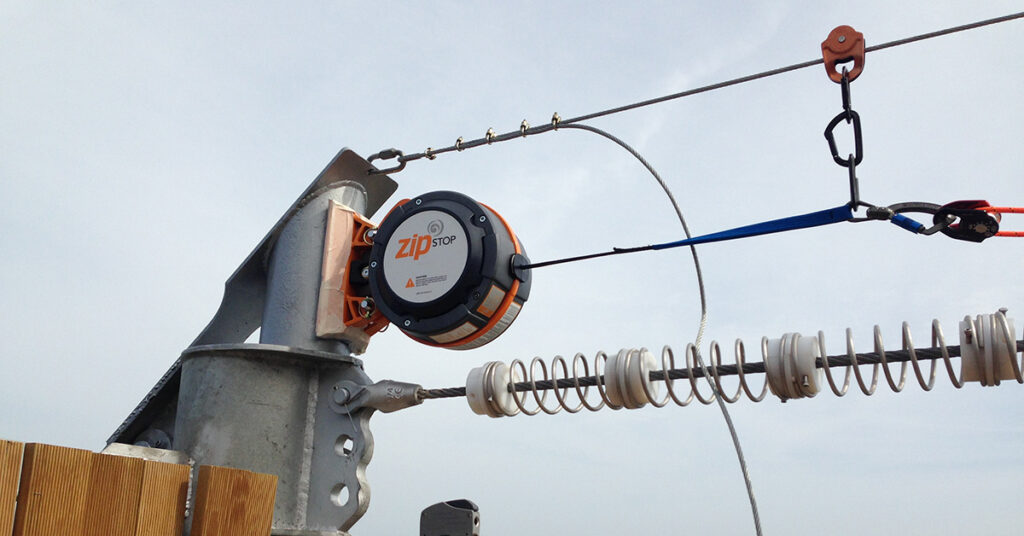
In conclusion, zipline construction should be left to experts with knowledge of its design and construction.
Many people are unaware of how very sophisticated a zip line’s construction is. Backyard zip lines that have not been designed by a qualified zip line builder are downright unsafe. The conventional zip line equipment that is available for purchase online may not always be the ideal choice for a secure flying experience. When creating a zip line, many things need to be taken into consideration. The exact calculations made to guarantee rider safety can mean the difference between having a great time and getting into an accident. At Thrill Syndicate, it is our responsibility to provide the highest level of safety and satisfaction. We follow a 7-step process to produce the premium zip line product we guarantee.
Site Exploration
The first step in installing a zip line is finding the spot. A site discovery guarantees that a zip line location will be a workable, successful, and secure operation. To ensure the proper slope angle is available to build a possible zip line, trained personnel must visit the planned zip line site and do a walk-through of the entire project to determine probable take-off zones, landing zones, and anchor points. To make sure the endeavor will be profitable, a research of human geography is required in addition to the physical component of the location. When constructing a new zip line, it is necessary to take into account the zipline site’s present visitor numbers, visitor demographics, and adjacent urban markets.
Location Design
Site design starts after site discovery is finished. The development of the zip line and the drafting of the business plan for the attraction both start with the site design. The ideal zip line is created by using schematic drawings to determine and finalize the zip line corridors, probable obstacles, and functional topographical considerations. Equipment including harnesses, catchers, cables, and brake systems are all included in the list of goods and materials needed to construct the zip line. The business strategy, which includes profit margins, objectives, ideal throughput rates, and the construction budget, is finished and optimized in addition to the actual zip line. It’s time to move on to the engineering of the zip line when these two procedures in the site design phase are finished.
Identification of the departure and arrival places through a thorough site study is the first step in the construction of a professional zip line. Based on the available braking distance, the slope must be reasonable. Once the locations have been chosen, we conduct a catenary and clearance study as well as a thorough land survey. Starting with official survey sites, this analysis report determines the ground line contour, arrival/departure tower requirements, and cable sag to ensure that every line is designed with the best slope and the right amount of clearance for riders. These steps guarantee that the zipline is constructed for optimal safety.
Site Analysis
Identification of the departure and arrival places through a thorough site study is the first step in the construction of a professional zip line. Based on the available braking distance, the slope must be reasonable. Once the locations have been chosen, we conduct a catenary and clearance study as well as a thorough land survey. Starting with official survey sites, this analysis report determines the ground line contour, arrival/departure tower requirements, and cable sag to ensure that every line is designed with the best slope and the right amount of clearance for riders. These steps guarantee that the zipline is constructed for optimal safety.
We consider the terrain of the landscape, any clearance difficulties (such as buildings, etc.), actual line tension, reaction loads, sag, and lastly, the launch and landing heights in order to calculate the final profile of your zipline.
-
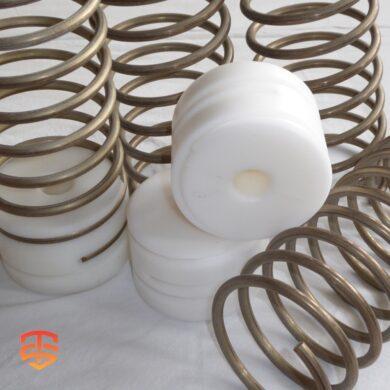 Spring Brake System | Primary & EAD zipline brake€ 98,00 Ex VAT
Spring Brake System | Primary & EAD zipline brake€ 98,00 Ex VAT -
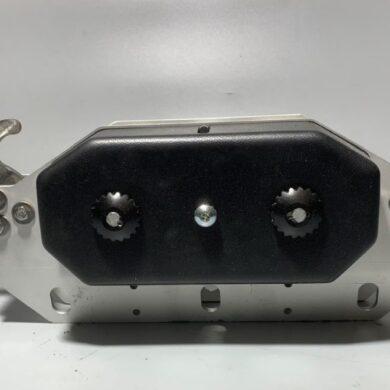 Self-braking Magnetic Zipline Trolley€ 1.320,00 Ex VAT
Self-braking Magnetic Zipline Trolley€ 1.320,00 Ex VAT -
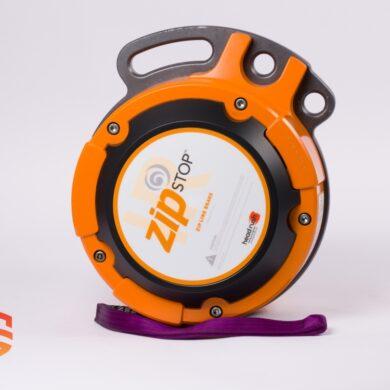 zipSTOP IR Zipline Brake | 24 – 60 kph€ 5.649,00 – € 5.799,00 Ex VAT
zipSTOP IR Zipline Brake | 24 – 60 kph€ 5.649,00 – € 5.799,00 Ex VAT
Engineering the Zip Line
The method of building zip lines depends heavily on zip line engineering. A zip line’s engineering makes ensuring it is secure, reliable, and compliant with all applicable regulations. The necessary engineering makes sure that the safest practices are followed, which includes having the right cable tension, cable length, cable sag, and anchor points in place. Additionally, the technicians at Thrill Syndicate conduct a technical feasibility assessment to check:
- Analysis of structural forces
- kinetic forces and rider velocities
- research on headwinds, tailwinds, and crosswinds
- characteristics, stresses, and safety tolerances for cables
- Calculations for secondary braking and damping
- Trays, catch blocks, and harnesses that are advised
- site-specific instructions for use and maintenance
- Utilization analysis
The zip line is beginning to take shape as a result of the technical feasibility study, and building will soon begin. Numerous factors to consider. The math is verified by our geotechnical, structural, and ride engineers. We comprehend and coordinate the many different aspects that go into making something operate, such as the soil composition, load distribution, and dynamic rider envelope.
There are a lot of things to think about while creating a professional zip line. Speed and, more significantly, how you stop are two critical factors. Speed is influenced by a multitude of variables, including design slope, rider weight, weather (wind at your back or in your face), trolley speed rating, aerodynamics, etc. The harder it is to safely stop the rider at the landing place, the quicker they are going.
Installation
Every aspect of installing zip lines has been taught to our team of builders. When you watch each of them in action, it’s clear that they have years of expertise. They ensure that each nut and bolt is in proper working order. It’s now time to construct the zip line after a lengthy process of site identification, design, engineering, equipment selection, and structure fabrication. A critical phase of the zip line project is the construction procedure. Safety is given top attention. The highest level of safety standards must be followed by everyone on the premises. The construction of zip lines and the effectiveness of the zip line structures also depend on a schedule and project management. The awareness of the zip line site’s natural surroundings is last but certainly not least. To provide the finest canopy tour experience and protect nature, zipline operators should strive to retain as much of the natural scenery as they can, merging the zip line attraction into the surrounding environment.
Employee Training
We always provide your personnel with hands-on training in addition to an operational training manual. This often lasts three to four days, covering every facet of safe and effective operation, depending on the size and type of your course. Since the zipline is now in place, it is time to train workers, learn the ins and outs of operation, and go through operational safety procedures. The process will proceed smoothly because of the entire experience up to this point, which has ensured that the line terminates in the proper locations and that the vertical drop per 100 meters is accurate. The public can now enjoy the much-anticipated new attraction and have a once-in-a-lifetime experience.
Inspections
Before leaving the job site, our installers give your project a thorough inspection. But we go further than that. Every six months to a year, depending on how frequently your course is taken, it is advised to complete a technical examination. We stick by you and provide continuing assistance on this front to guarantee that all hardware and the line itself consistently meet all safety requirements. Safety inspections are essential to ensuring the general security of both visitors and employees after the attraction opens for business. The zipline must comply with the most recent safety regulations and must undergo annual site inspections to guarantee there are no fatalities, injuries, or legal actions. To keep operating zip lines, the greatest safety standards must be maintained.
Project Management
We think that a project that is adequately managed produces superior results. To achieve this, we assign the right individual the responsibility for managing every step of planning, production, and installation, ensuring a steady flow of work throughout. The prefabricated structures and zipline system are put together on the spot by Thrill Syndicate staff. We guarantee impeccable craftsmanship and employ cutting-edge materials in all of our zipline installations and course constructions, all while reducing waste and our environmental impact.
In order to keep all projects on pace, on schedule, and within budget, we plan, track, and report on all phases of zipline installation and setup. To keep everyone updated, we send out updates on a regular basis to our clients. Due to the unique nature of each project, we estimate various zipline installation times for each site. Prior to the business’s launch, we do dry runs and safety tests to make sure flyers are satisfied. We know from experience that a Thrill Syndicate System, once installed, will offer years of demanding service in its demanding environment.
Safety is our top focus when installing and setting up ziplines. Throughout every stage of building and installation, we guarantee uncompromised safety. For both equipment and structures, we work hard to go above and beyond industry requirements. For every site, we have certified engineer stamps and certificates. Our specially designed zipline course minimizes environmental effect by blending in seamlessly with their natural habitat. We try to use the site’s natural resources, local labor, materials, and equipment whenever possible, and we use less invasive zipline setup and installation techniques to preserve the nearby land and green area.
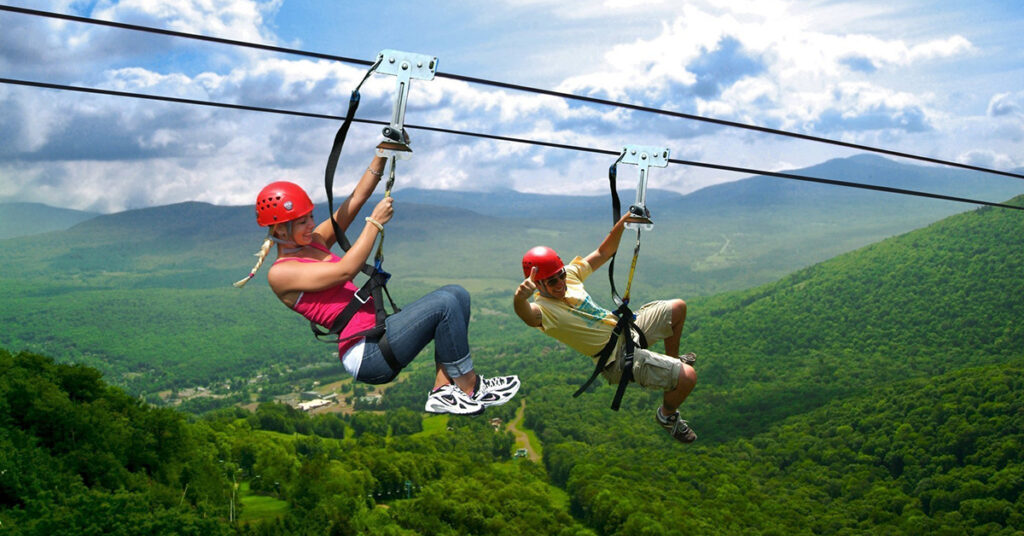
New Zipline Technology to consider
Self-braking Zipline trolley with integrated magnetic brake
The magnetic Zipline Pulley has an integrated magnetic brake that is powerful and incrementally adjustable. We can slow down the rider to a manageable pace without friction, heat, or cable wear thanks to the inbuilt Eddy Current Brake. As a result, the demand for maintenance on the zipline lines and trolley is considerably reduced.
The key safety difficulties surrounding the regulated and safe braking scenario at the end of high-speed zip wire courses are addressed by our self-braking zip wire pulley.
The Zip Line Brake
This is one of the most important parts of the zip lining experience. Many riders will ask “How do I stop at the end” before they clip in to the ride. That’s because they want to know what to expect at the end and what they will be required to do. The best zip line brakes offer passive braking; this means the rider does not have to participate in braking and will automatically be slowed to a stop at the end of the line. Thrill Syndicate adapted the patented magnetic braking technology and created the zipSTOP Zip Line Brake, an innovative product that improves the customer experience, throughput, and reliability on your zip line.
The Emergency Backup Brake
An emergency arrest device (EAD), or emergency brake, is an essential component of a complete zip line brake system. An EAD is a secondary brake that will automatically engage in the event that the primary brake fails and will prevent rider injury or death. When installing a zip line, unmanned testing should be conducted to ensure proper function of both the primary brake and the EAD. Check out our white paper on EADs to get complete details on this essential zip line component.
Beyond the Basics: Unveiling Zipline Technology with Expert Analysis
Intrigued by the potential of Zipline technology? You’ve come to the right place! This article provides a solid foundation. But if you’re eager to delve deeper and gain insights from industry experts, keep reading…
- Zip Line Design: Components for a Complete System
- Considering operating and investing in a zipline?
- 9 Zipline Mistakes You Don’t Know You’re Making
- Magnetic Zipline Braking: A Revolutionary Way to Ensure Safe Rides
- Pros and Cons of Different Zip Line Brakes
- Expert Tips for Zip Line Brake Installations
- White Paper on Zipline Emergency Arrest Devices (EAD)
- The Importance of Optimizing Zip Line Design for Rider Speed
- Does your zip line need an emergency arrest device?
- The Magnetic Self-braking Zipline pulley
- Zipline Braking and landing considerations
- Why Zip Line Trolley Bearings Matter
- Whitepaper: Zipline Braking Dynamics
- Zip Line Installation: Give them the Best Ride
- How to startup a Successful Zip Line Business
-
 Spring Brake System | Primary & EAD zipline brake€ 98,00 Ex VAT
Spring Brake System | Primary & EAD zipline brake€ 98,00 Ex VAT -
 zipSTOP IR Zipline Brake | 24 – 60 kph€ 5.649,00 – € 5.799,00 Ex VAT
zipSTOP IR Zipline Brake | 24 – 60 kph€ 5.649,00 – € 5.799,00 Ex VAT -
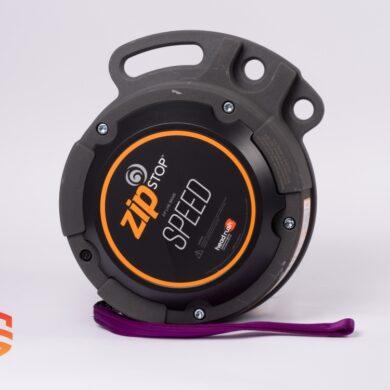 zipSTOP SPEED Zipline Brake | 50 – 72 kph€ 6.099,00 – € 6.349,00 Ex VAT
zipSTOP SPEED Zipline Brake | 50 – 72 kph€ 6.099,00 – € 6.349,00 Ex VAT







